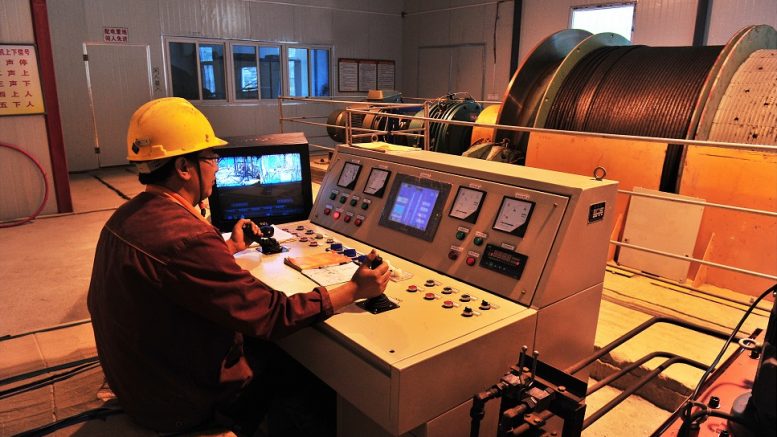Uncertainty over the coronavirus outbreak — which has sickened 43,103 people in 25 countries and left 1,018 people dead (all but two of them in mainland China) — has economists and analysts trying to calculate the economic impact of the disease on commodities, trade and supply chains and global economic growth.
UBS economists expect the current coronavirus outbreak, which originated at a market in Wuhan, China, will reduce global growth this year by 2.5 percentage points, The Wall Street Journal reported on Feb. 5.
The health crisis is expected to take a dramatic economic toll on China, where 42,708 of the 43,103 cases have been reported, according to the latest figures from the World Health Organization.
Last year, the Chinese economy grew by 6.1% — the slowest pace in nearly 30 years — and many experts have already started cutting their GDP forecasts for 2020.
Recently, Moody’s Investor Service estimated Chinese GDP will grow 5.8% this year, while BMO Capital Markets cut its GDP growth estimate for China to 4.5% in the first quarter of 2020 and to 5.5% for the full year.
China absorbs more than 50% of the world’s base metals, is a major importer of iron ore (about 75% of global production), and produces about 53% of its steel.
“Reduced manufacturing activity and lower construction and infrastructure investment will hurt demand across the base metals and iron ore complex, and potentially change the dynamics where deficit positions exist in 2019 (copper, zinc, nickel) to either bring metals into a surplus position, or create an even greater surplus than forecast for 2020 — to the further detriment of prices,” Moody’s stated in a Feb. 4 research note.
“While all producers will be affected, smaller companies at the low end of the rating scale and single-commodity producers will see the effects sooner than larger more diversified miners,” it said. “Companies with a material percentage of their revenue derived from sales into China will be hit by both price and unit sales declines.”
Comparisons to the economic impact of another coronavirus outbreak in 2002-2003 — the Severe Acute Respiratory Syndrome (SARS) — are not meaningful, many analysts say, as China’s economy today makes up a much bigger part of the global economy than it did 18 years ago.
For commodities, BMO stated in a note to clients, “it’s a whole different world now.”
“In 2003, China was about 20% of base metals demand and about 25% of steel,” BMO reported. “Now, overall markets are 50-100% larger than at that point, with China about 50% of demand. The impact on commodity markets is naturally amplified this time around.”
Hubei province, where the city of Wuhan is located and the epicentre of the coronavirus outbreak, also manufactures about 8% of the country’s autos and is China’s largest galvanized steel producer, BMO noted. “Thus, disruption to activity is net negative for metals markets.”
Wuhan is also one of China’s key oil and gas hubs.
“Hubei province had expected to record a regional economic growth rate of up to 7.8% in 2020 according to the local authorities, 200 basis points higher than our forecast for China’s total economy,” Moody’s stated. “As China’s ninth-most populous and seventh-highest province by GDP, a slowdown in economic activity will pose significant repercussions for the country as a whole.”
“When SARS hit, China’s economy was on an upswing, with swelling numbers of outbound travellers and fast-growing trade, but it was only the sixth biggest economy, whereas today it is No. 2 in GDP and No. 1 in world trade,” James T. Areddy, a reporter at The Wall Street Journal, wrote in an article on Feb. 3.
“Forecasting the costs of the crisis is impossible,” he said. “Last year, the WHO said in a report that it had tracked 1,483 epidemic events in 172 countries between 2011 and 2018. The most expensive in recent history include US$40 billion in lost productivity due to SARS in 2003 and up to US$50 billion during a 2009 H1N1 swine flu epidemic, both of which involved China. The WHO said an outbreak of Ebola in West Africa from 2014 to 2016 cost US$53 billion in economic and social impacts.”
The early impact of the disease has been seen already in the shipping industry. The Wall Street Journal cited statistics from maritime data provider Paris Alphaliner that “ship calls at or through Chinese ports have fallen 20% since Jan. 20.”
“Brokers in China said bookings for container ships, tankers and dry bulk vessels are falling rapidly and that the slowdown could extend until March. The reduction in shipping volumes is expected to ripple across supply chains in the U.S. and Europe, with rail and truck volumes likely sliding in the coming weeks on the reduced flow of international goods,” the newspaper reported.
An indefinite shutdown of industry in China will have important implications across supply chains. Car makers in South Korea that source parts from China have started shutting down some of their plants, while manufacturers of smartphones, computers and other electronics have also been impacted.
On Feb. 6, China National Offshore Oil Corp. (CNOOC) declared force majeure and opted out of some of its liquefied natural gas (LNG) contracts, according to The Wall Street Journal.
Declining travel will also hammer the airline industry, which has seen many carriers cancel flights to Hong Kong and China. The declining traffic has also dampened demand for jet fuel.
Domestic consumption in China – a country of 1.4 billion people – is also expected to fall as shopping malls and markets in many cities remain empty. Companies like Apple, Starbucks and Ikea have closed their doors.
The conference business is also suffering. Credit Suisse Group cancelled its Asian Investor conference in Hong Kong scheduled in March – the first time the event has been cancelled. SEMI, an association representing electronics makers, has postponed its conference scheduled to take place in Shanghai in mid-March, marking the second cancellation of the event in 50 years.
SARS was a coronavirus found in bats that jumped to Asian palm civets and then to humans.
The current coronavirus is also thought to have originated in bats and possibly jumped to an intermediary animal host – possibly pangolins –before infecting humans, according to Nature magazine.
SARS infected 8,096 people around the world in 27 countries and killed 774 of them for a mortality rate of 9.6%.





Be the first to comment on "Coronavirus to hit demand for commodities, economists say"